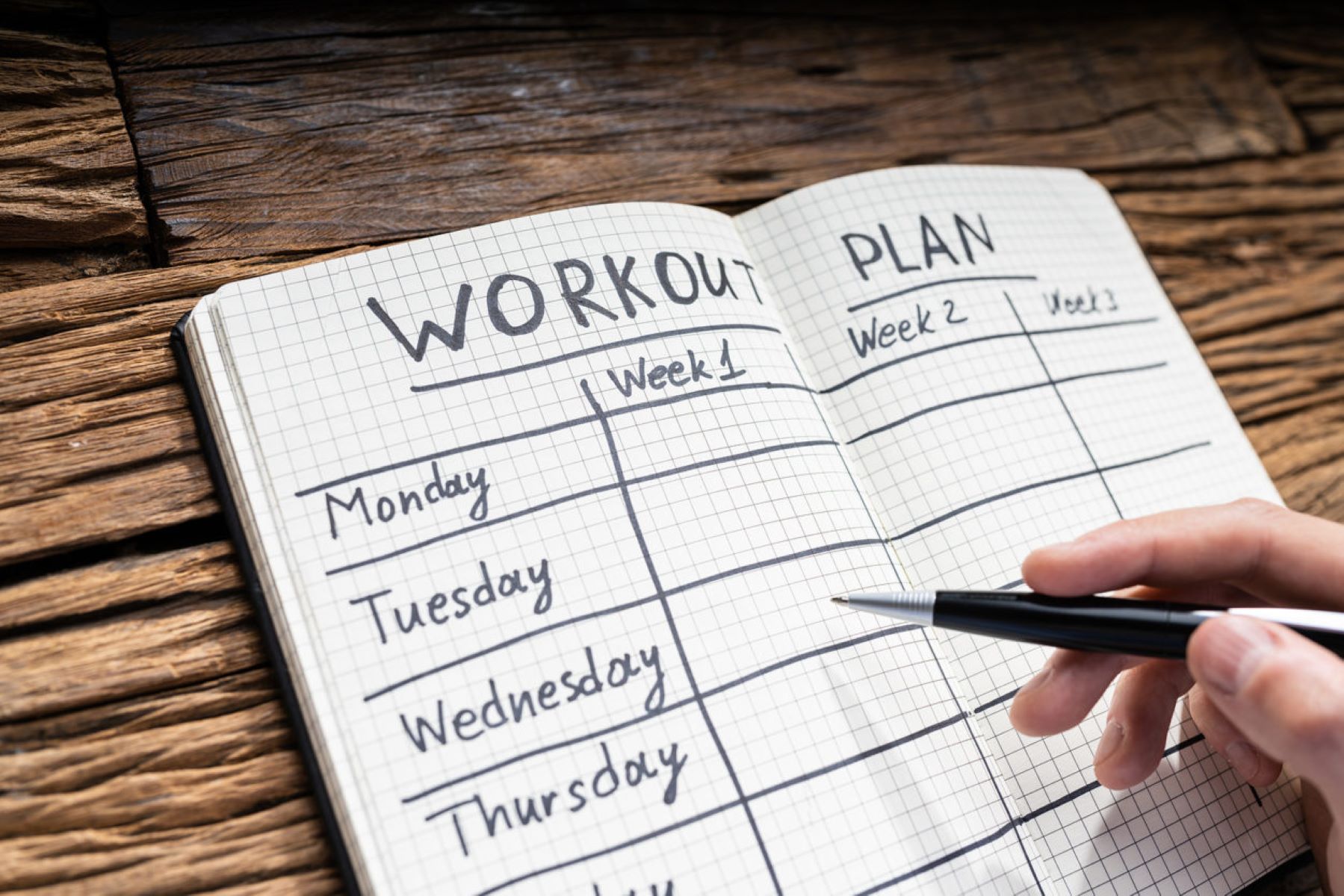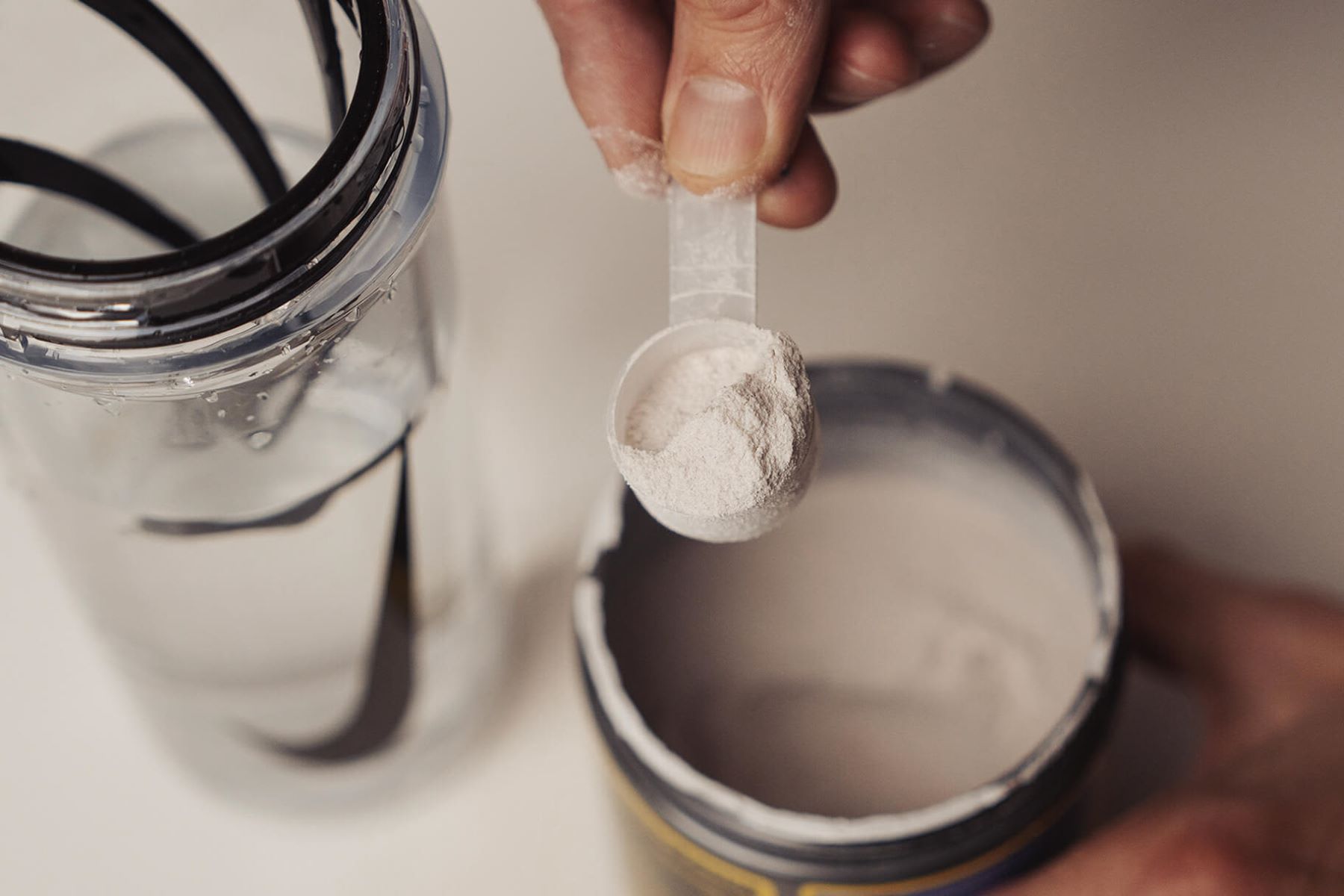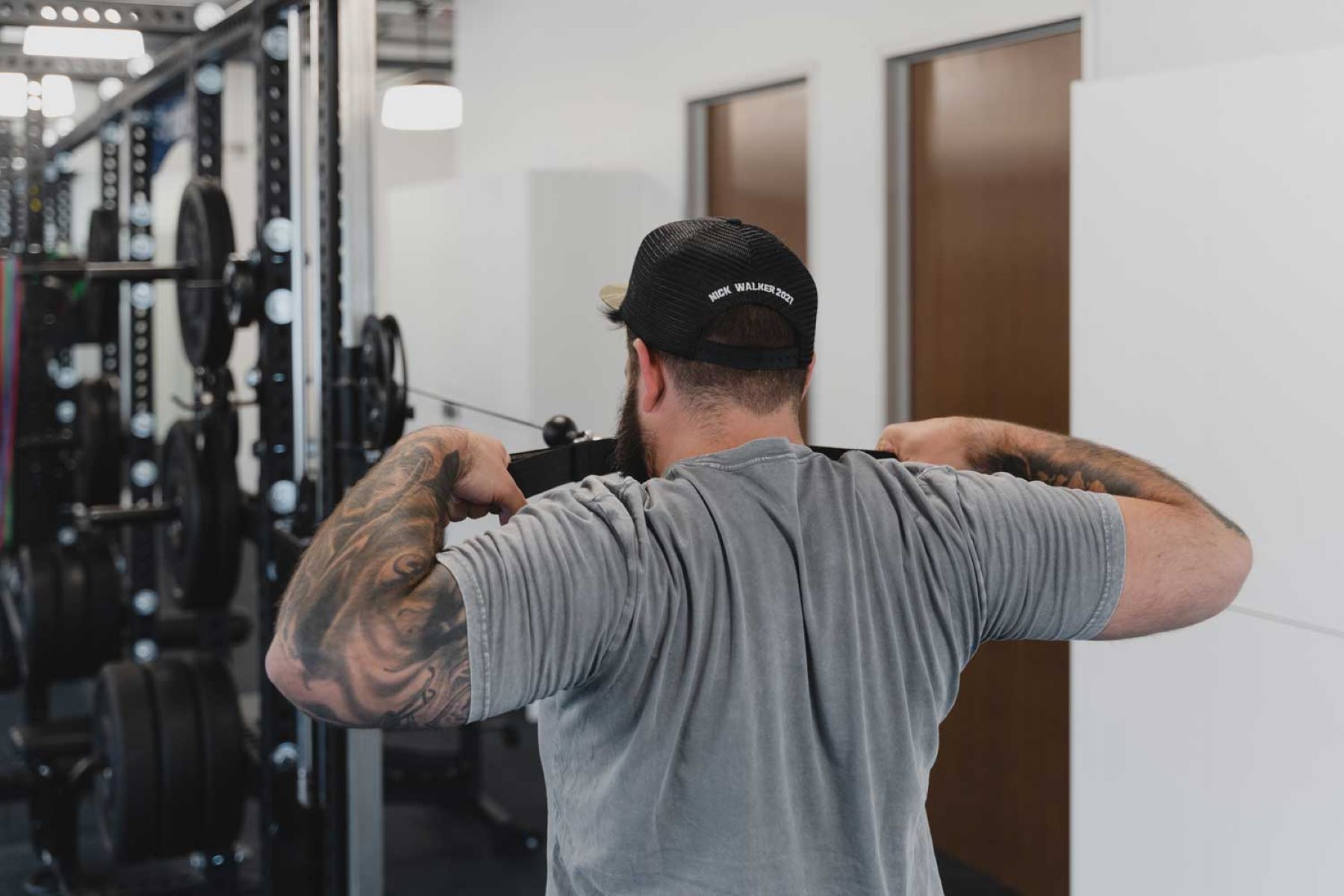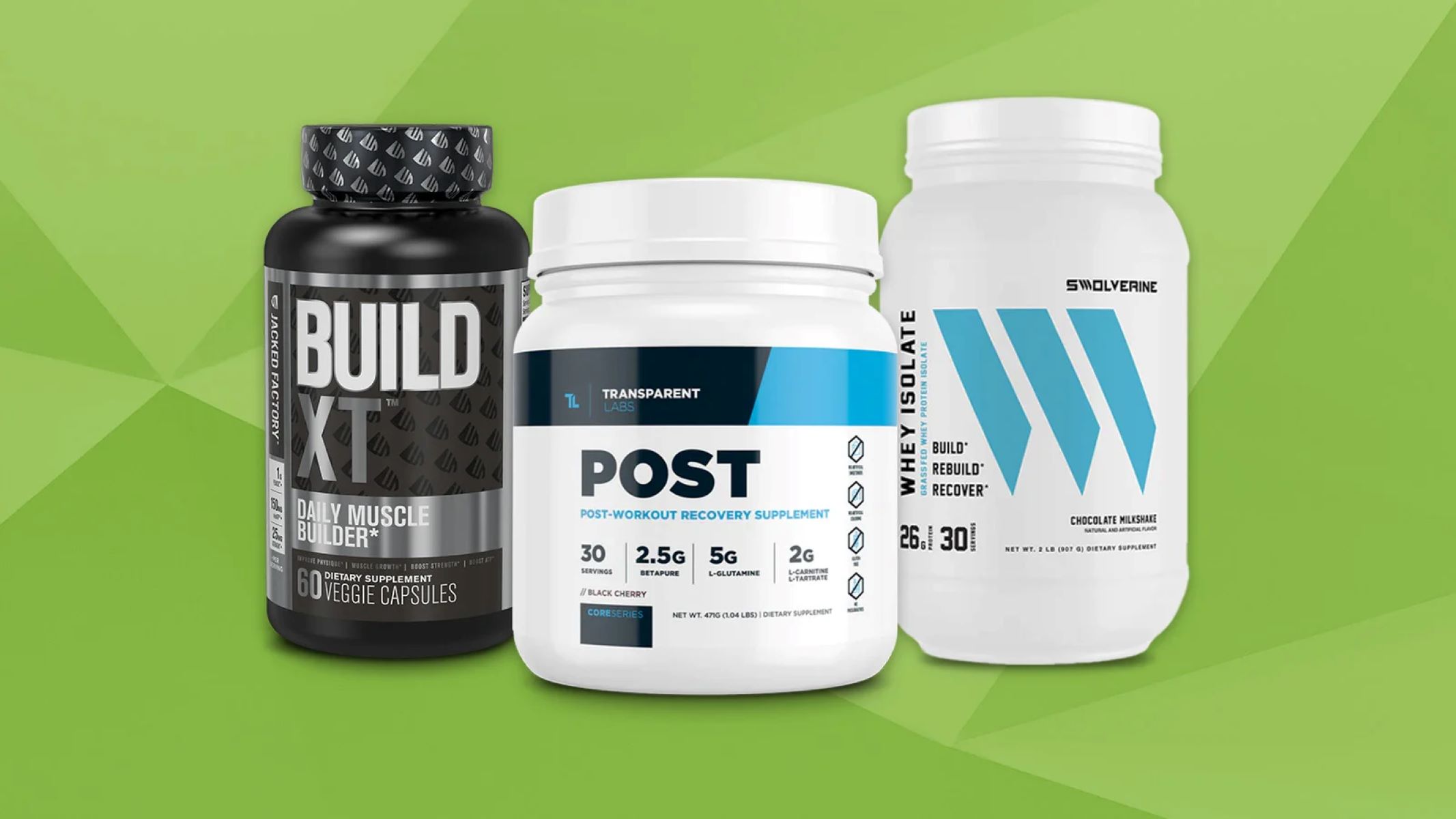Home>Misc>Featured>How Often Should You Workout To Build Muscle


Featured
How Often Should You Workout To Build Muscle
Modified: January 2, 2024
Find out the optimal workout frequency to gain muscle mass and maximize results. Discover the featured routine for effective muscle building.
Introduction
When it comes to building muscle, one of the key factors that determines success is the frequency of your workouts. Finding the right balance between training and recovery is crucial for achieving optimal muscle growth.
Whether you’re a beginner or an experienced lifter, understanding the science behind muscle building and the factors that influence it can help you design an effective workout schedule. In this article, we’ll delve into the importance of frequency in muscle growth and provide guidance on how often you should work out to maximize your gains.
Muscle building, also known as hypertrophy, occurs when the muscle fibers undergo microscopic damage during exercise and repair themselves through a process called protein synthesis. This repair and regeneration process leads to muscle growth and increased strength.
Several factors influence muscle growth, including genetics, nutrition, sleep, and hormones. However, the frequency of your workouts plays a pivotal role in stimulating muscle development. Understanding how often you should train can prevent overtraining, optimize recovery, and ensure consistent progress.
Before determining the frequency of your workouts, it’s important to note that muscle growth occurs during the recovery phase rather than during the actual workout. Giving your muscles enough time to rest and recover is crucial for preventing injury and promoting growth.
When it comes to designing a workout schedule for muscle growth, you need to strike a balance between providing enough stimulus for the muscles to adapt and allowing sufficient recovery time for them to grow stronger. This delicate balance will vary depending on factors such as your training experience, fitness level, and overall goals.
In the following sections, we’ll explore the optimal frequency of training for muscle growth, the importance of rest and recovery, and how to design an effective workout schedule. By understanding these concepts, you’ll be able to tailor your training routine to maximize your muscle-building potential and achieve the results you desire.
Understanding Muscle Building
Muscle building, also known as hypertrophy, is the process of increasing the size and strength of your muscles. It is achieved through a combination of exercise, proper nutrition, and adequate rest.
During resistance training, such as weightlifting, your muscles are subjected to stress and tension. This causes micro-tears in the muscle fibers, which then initiate a series of biochemical reactions. These reactions stimulate the repair and growth of the muscle fibers, resulting in increased muscle size and strength.
One of the primary mechanisms behind muscle growth is protein synthesis. When you consume protein through your diet, it gets broken down into amino acids, which are the building blocks of muscle tissue. These amino acids are then utilized by your body to repair and build new muscle fibers.
In addition to protein synthesis, there are other factors that contribute to muscle growth. Hormones, such as testosterone and growth hormone, play a crucial role in regulating protein synthesis, muscle tissue repair, and muscle growth. These hormones are naturally released in response to exercise and provide the stimulus for muscle development.
Furthermore, the intensity and volume of your workouts can also impact muscle growth. Intensity refers to the amount of weight you lift, while volume refers to the total number of sets and repetitions performed. Both of these factors influence the amount of mechanical stress placed on the muscles, which is essential for triggering muscle growth.
It’s important to note that muscle building is not solely about aesthetics. Building and maintaining muscle mass has numerous benefits for overall health and well-being. It improves your metabolic rate, which helps with weight management. It enhances bone density, reducing the risk of osteoporosis. It also improves insulin sensitivity, reducing the likelihood of developing type 2 diabetes.
Additionally, having a well-developed muscular system can enhance athletic performance and functional abilities. Whether you’re an athlete, a weekend warrior, or simply want to improve your everyday activities, building muscle can help you become stronger, more resilient, and more efficient in your movements.
Now that we have a solid understanding of muscle building, let’s explore the factors that influence muscle growth and how they impact the frequency of your workouts.
Factors Affecting Muscle Growth
Building muscle is a complex process influenced by several factors. Understanding these factors can help you optimize your workout routine and achieve the best results. Let’s take a closer look at the key factors that affect muscle growth:
1. Genetics: Genetics play a significant role in determining your muscle-building potential. Some individuals naturally have a higher propensity for muscle growth, while others may find it more challenging to build and maintain muscle mass. However, regardless of your genetic makeup, consistent training and proper nutrition can still lead to significant muscle gains.
2. Nutrition: Proper nutrition is crucial for muscle growth. Consuming an adequate amount of protein is essential, as it provides the building blocks for muscle repair and growth. Aim for a protein intake of around 1.6 to 2.2 grams per kilogram of body weight each day. Additionally, ensure you’re getting enough calories to support your training and create an energy surplus for muscle growth.
3. Training Intensity: The intensity of your workouts is a major factor in muscle growth. By pushing your muscles to their limits, you create micro-tears in the muscle fibers, which stimulates the growth process. Focus on progressively increasing the weight and intensity of your exercises over time to challenge your muscles and promote growth.
4. Training Volume: The volume of your workouts refers to the total amount of work performed, including the number of sets, repetitions, and exercises. Higher training volume has been associated with greater muscle growth, but it’s important to find a balance that allows for adequate recovery. Gradually increase volume over time to avoid overtraining and maximize muscle gains.
5. Progressive Overload: To continue stimulating muscle growth, you need to progressively overload your muscles. This means consistently challenging them by increasing the weight, intensity, or volume of your workouts. The principle of progressive overload ensures that your muscles are continually adapting and growing stronger.
6. Rest and Recovery: Rest and recovery are often overlooked but are crucial for muscle growth. During rest periods, your muscles repair and adapt to the stress of training, leading to growth. Aim for 48 to 72 hours of recovery time between workouts targeting the same muscle group. Additionally, prioritize quality sleep to support optimal muscle recovery.
7. Hormonal Balance: Hormones play a significant role in muscle growth. Testosterone, growth hormone, and insulin-like growth factor-1 (IGF-1) are all important for protein synthesis and muscle development. Engaging in regular resistance training, maintaining a healthy body weight, and managing stress can help optimize your hormonal balance for muscle growth.
By understanding these factors and incorporating them into your training and lifestyle, you can create an environment that maximizes muscle growth potential. In the next section, we’ll explore how the frequency of your workouts influences muscle development.
Frequency of Training for Muscle Growth
When it comes to the frequency of your workouts for muscle growth, finding the right balance is crucial. Overtraining can lead to muscle fatigue, impaired recovery, and decreased gains, while undertraining may not provide enough stimulus for optimal growth. So, how often should you work out to build muscle?
The optimal frequency of training for muscle growth depends on various factors such as your training experience, fitness level, and overall goals. Generally, most individuals benefit from training each muscle group two to three times per week. This allows for adequate stimulus without risking excessive fatigue or insufficient recovery.
For beginners or individuals new to resistance training, starting with two to three full-body workouts per week can be effective. This ensures that each muscle group is adequately trained while allowing for sufficient recovery time. As you become more experienced, you can increase the frequency by focusing on specific muscle groups on different days.
Intermediate and advanced lifters may benefit from training each muscle group with higher frequency, such as three to four times per week. This increased frequency provides more opportunities for muscle stimulation and growth. However, it’s important to listen to your body and ensure that you’re allowing enough recovery time between sessions.
It’s worth noting that the frequency of your workouts doesn’t solely depend on the number of times you hit the gym. The volume and intensity of each session also play a significant role. If you’re training a muscle group multiple times per week, consider adjusting the volume and intensity of each session to prevent overtraining.
Furthermore, the duration of your workouts also matters. Aim for efficient and focused training sessions that typically last between 45 minutes to an hour. Going beyond this duration may not necessarily lead to more muscle growth and can increase the risk of overtraining and fatigue.
Remember, as important as it is to challenge your muscles, giving them enough time to rest and recover is equally crucial for muscle growth. Recovery allows your muscles to repair and adapt to the training stimulus, leading to increased size and strength over time. Neglecting adequate rest can hinder your progress and increase the risk of injury.
Ultimately, the frequency of your workouts should be individualized based on your unique circumstances. Pay attention to how your body responds to different training frequencies and adjust accordingly. It’s always best to seek guidance from a qualified fitness professional who can tailor a program to meet your specific needs and goals.
In the next section, we’ll delve into the importance of rest and recovery in the muscle-building process.
Importance of Rest and Recovery
Rest and recovery are often overlooked aspects of muscle building, but they are essential for maximizing your results. While training provides the stimulus for muscle growth, it’s during rest and recovery periods that your muscles actually repair and grow stronger. Here’s why rest and recovery are crucial for effective muscle development:
1. Muscle Repair: When you engage in intense workouts, you create micro-tears in your muscle fibers. Rest and recovery give your body the time it needs to repair these damaged fibers. This repair process, known as muscle protein synthesis, leads to muscle growth and increased strength. Without adequate rest, this repair process is compromised, hindering your progress.
2. Hormonal Balance: Rest and recovery play a crucial role in maintaining optimal hormonal balance. During sleep and rest periods, your body releases hormones that are vital for muscle growth, such as growth hormone and testosterone. These hormones stimulate protein synthesis and support tissue repair. Insufficient rest can disrupt hormone production, impeding muscle growth.
3. Injury Prevention: Rest and recovery allow your muscles, tendons, and other connective tissues to heal and regenerate. Overtraining and lack of recovery time increase the risk of overuse injuries, strain, and inflammation. Taking regular rest days and incorporating active recovery methods, such as stretching and foam rolling, can help prevent injuries and keep you performing at your best.
4. Mental Well-being: Muscle building is not just physical; it’s also a mental endeavor. Rest and recovery provide an opportunity for mental rejuvenation. Getting enough sleep and taking rest days can prevent burnout, fatigue, and mental exhaustion. Mental well-being is crucial for sustaining long-term progress and staying motivated to continue with your muscle-building journey.
5. Performance Enhancement: Adequate rest and recovery help improve your overall performance in the gym. When you’re well-rested, you have more energy, focus, and physical readiness for intense workouts. By allowing your body to recover properly, you’ll be able to push harder during training sessions, leading to better muscle stimulation and growth.
6. Adaptation and Progression: Muscle growth occurs when your body adapts to the stress placed on it during exercise. This adaptation process takes time and requires proper rest and recovery. Without enough recovery, your body will struggle to keep up with the demands of training, and progress may plateau. Prioritizing rest and recovery ensures that you continue to make gains and achieve your muscle-building goals.
Remember, rest and recovery are not signs of weakness; they are essential components of a well-rounded training program. Incorporate rest days into your routine and listen to your body. If you’re feeling excessively fatigued or noticing a decline in performance, it may be a sign that you need more rest.
In the following sections, we’ll explore how to balance other fitness goals alongside muscle building and provide guidance on designing an effective workout schedule.
Balancing Other Fitness Goals
While building muscle may be a primary focus, it’s important to balance this goal with other aspects of fitness to maintain overall health and well-being. Here are some tips for balancing other fitness goals alongside muscle building:
1. Cardiovascular Endurance: Building muscle doesn’t mean neglecting cardio exercises. Cardiovascular workouts, such as running, cycling, or swimming, are essential for improving cardiovascular endurance, boosting heart health, and burning calories. Incorporate cardio sessions into your workout schedule, aiming for at least 150 minutes of moderate-intensity aerobic activity or 75 minutes of vigorous activity per week.
2. Flexibility and Mobility: Don’t forget about the importance of flexibility and mobility. Stretching exercises and activities like yoga or Pilates can help improve range of motion, prevent muscle imbalances, and reduce the risk of injuries. Dedicate time to stretching and mobility exercises, either as part of your warm-up or on rest days.
3. Body Composition: While muscle building may be your primary goal, paying attention to body composition is important for overall health. This includes managing body fat percentage, which can be achieved through a combination of resistance training, cardio exercises, and a balanced diet. If fat loss is a goal, consider incorporating high-intensity interval training (HIIT) into your routine to maximize calorie burn.
4. Strength and Power: Building muscle is closely tied to strength and power development. Including compound exercises, such as squats, deadlifts, and presses, in your training routine can help improve overall strength and power. Set specific strength-related goals and periodically assess your progress to ensure continued growth.
5. Mental Well-being: Fitness isn’t just about physical health; it’s also about mental well-being. Incorporate activities that promote mental relaxation and stress reduction, such as meditation or mindfulness practices. Taking care of your mental health is essential for maintaining motivation, focus, and overall happiness in your fitness journey.
Remember, achieving a balance between your fitness goals requires careful planning and adaptation. It’s important to design a workout schedule that incorporates all these aspects without overwhelming your body or mind. Seek guidance from a fitness professional to help create a well-rounded program tailored to your specific needs and goals.
By striking a balance between muscle building and other fitness goals, you can achieve a comprehensive and holistic approach to your overall fitness journey. In the next section, we’ll provide guidance on how to design an effective workout schedule that encompasses these different goals.
Designing an Effective Workout Schedule
Designing an effective workout schedule is essential for achieving your fitness goals, including muscle building. A well-structured plan ensures that you’re providing enough stimulus for muscle growth while balancing other aspects of fitness. Here are some key considerations in designing an effective workout schedule:
1. Set Clear Goals: Before designing your workout schedule, identify your specific goals. Do you want to primarily focus on muscle building, or do you have other fitness goals, such as cardiovascular endurance or flexibility? Setting clear goals allows you to tailor your training plan accordingly.
2. Determine Training Frequency: Determine how many days per week you can dedicate to training. This will depend on your schedule, recovery capacity, and other commitments. Aim for a minimum of three days of resistance training per week to effectively stimulate muscle growth. You can allocate additional days for cardiovascular exercises, flexibility training, or rest and recovery.
3. Split Your Routine: Consider splitting your workouts based on muscle groups or training modalities. For muscle building, a common approach is to divide your routine into upper body and lower body workouts or push and pull workouts. This allows you to focus on specific muscle groups while providing ample recovery time.
4. Prioritize Compound Exercises: In your workout schedule, prioritize compound exercises that work multiple muscle groups simultaneously. Exercises like squats, deadlifts, bench presses, and overhead presses engage large muscle groups and promote overall strength and muscle development.
5. Include Progressive Overload: Make sure your workout schedule incorporates progressive overload, gradually increasing the intensity, volume, or weights used over time. This ensures that your muscles are continually challenged, stimulating growth and adaptation.
6. Allow Sufficient Rest and Recovery: Avoid consecutive days of intense training for the same muscle groups. Allow at least 48 to 72 hours of rest between workouts targeting the same muscle group to promote optimal recovery and prevent overtraining.
7. Consider Periodization: Periodization involves dividing your training program into specific phases, each with different goals and training intensities. This helps prevent plateaus and keeps your body adapting to new stimuli. Common periodization methods include linear periodization, undulating periodization, and block periodization.
8. Adapt and Evolve: As you progress and become more experienced, be open to adjusting and evolving your workout schedule. This may involve changing exercises, manipulating sets and repetitions, or modifying training frequencies. Listen to your body, monitor your progress, and make necessary adjustments to continue making gains.
Remember, an effective workout schedule is not one-size-fits-all. It should be personalized to your individual needs, goals, and preferences. If you’re unsure about designing a workout schedule on your own, consider seeking guidance from a qualified fitness professional who can create a program tailored to your specific requirements.
In the next section, we’ll provide some examples of sample workout schedules to give you an idea of how to structure your training routine.
Sample Workout Schedules
Sample workout schedules can serve as a starting point to help you structure your training routine. These examples can be adjusted based on your individual goals, preferences, and fitness level. Here are a few sample workout schedules to provide you with some guidance:
1. Full-Body Workout (3 days per week):
- Day 1: Compound exercises targeting major muscle groups (e.g., squats, bench press, rows)
- Day 2: Cardiovascular exercise (e.g., running, cycling) or rest
- Day 3: Compound exercises targeting different muscle groups (e.g., deadlifts, overhead press, pull-ups)
- Repeat the cycle for a total of three days per week, with one or two days of rest in between workout days.
2. Upper/Lower Split (4 days per week):
- Day 1: Upper body strength training (e.g., bench press, shoulder press, pull-ups)
- Day 2: Lower body strength training (e.g., squats, lunges, deadlifts)
- Day 3: Cardiovascular exercise (e.g., swimming, jump rope) or rest
- Day 4: Upper body strength training (different exercises than Day 1)
- Repeat the cycle for a total of four days per week, with one or two days of rest in between workout days.
3. Push/Pull/Legs (5 days per week):
- Day 1: Push exercises (e.g., bench press, overhead press, tricep dips)
- Day 2: Pull exercises (e.g., pull-ups, rows, bicep curls)
- Day 3: Lower body exercises (e.g., squats, lunges, calf raises)
- Day 4: Cardiovascular exercise (e.g., cycling, HIIT, stair climbing) or rest
- Day 5: Full-body workout focusing on weaker muscle groups or a combination of exercises from all categories
- Repeat the cycle for a total of five days per week, with one or two days of rest in between workout days.
Note that these are just examples, and you can modify them based on your preferences and schedule. Also, remember to include warm-up exercises and cool-down stretches in each workout session to prevent injuries and aid recovery.
It’s important to gradually progress the intensity, volume, and weights used in your workouts. Start with lighter weights and fewer repetitions and gradually increase over time as your strength and form improve.
Lastly, listen to your body. If you’re feeling excessively fatigued or experiencing persistent soreness, consider taking additional rest days to allow for proper recovery.
By utilizing a well-designed workout schedule, you can effectively target different muscle groups, balance various fitness goals, and ensure continued progress towards your desired outcomes.
Conclusion
Designing an effective workout schedule is key to achieving your muscle-building goals while maintaining overall fitness. Understanding the factors that influence muscle growth, such as genetics, nutrition, and training intensity, is crucial for optimizing your workout routine.
When determining the frequency of your workouts, aim for two to three sessions per week for each muscle group. Balancing rest and recovery is equally important for muscle growth, as this is when your muscles repair and grow stronger. Incorporating other fitness goals, such as cardiovascular endurance and flexibility, ensures a well-rounded approach to your overall fitness journey.
When designing your workout schedule, remember to prioritize compound exercises, incorporate progressive overload, and allow for sufficient rest between training sessions. Adjust and evolve your routine as needed, and seek guidance from a fitness professional for personalized recommendations.
Sample workout schedules provide a starting point, but feel free to tailor them to your needs. Whether you choose a full-body workout, an upper/lower split, or a push/pull/legs routine, ensure that it aligns with your goals, preferences, and fitness level.
Remember, building muscle is a gradual process that requires consistency, patience, and dedication. Stay committed to your workout schedule, and make adjustments as necessary to keep challenging your muscles and avoiding plateauing.
By striking a balance between training frequency, rest and recovery, and other fitness goals, you can design an effective workout schedule that supports your muscle-building aspirations. Stay focused, listen to your body, and enjoy the journey toward a stronger, healthier, and more muscular physique.









